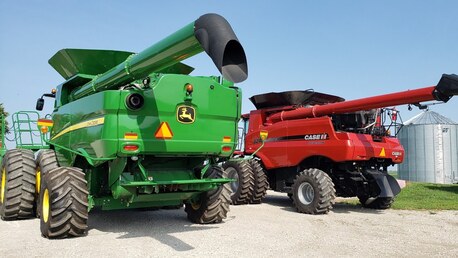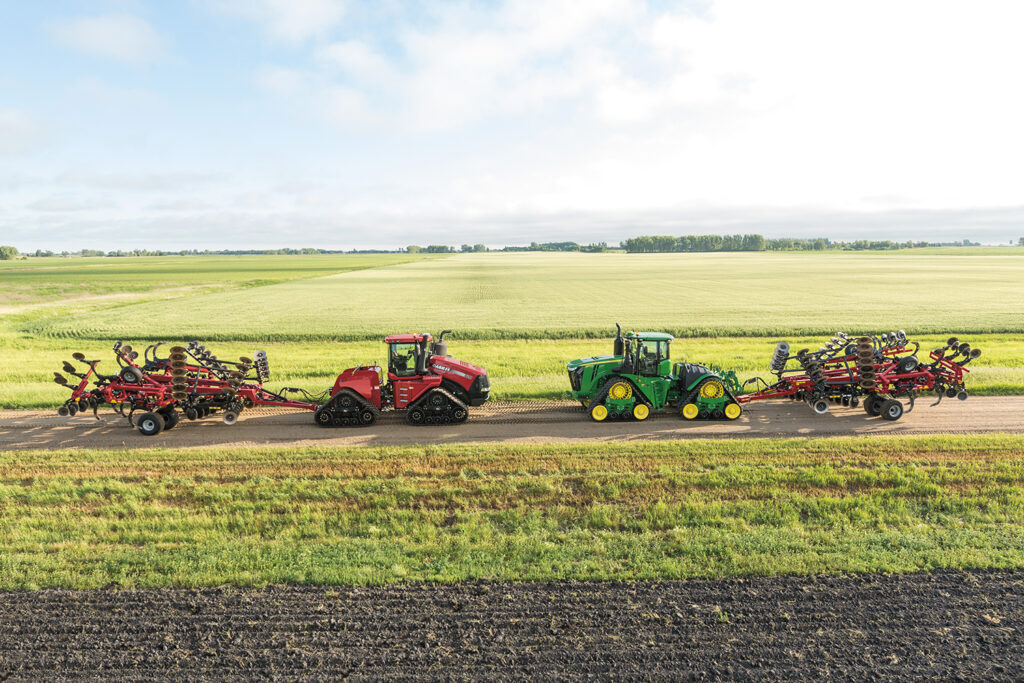When it comes to wheat harvesting, choosing the right combine is crucial for maximizing productivity and efficiency. John Deere and Case are two well-known brands in the agricultural industry, offering a range of combines with unique features and capabilities. In this article, we will compare John Deere and Case combines, focusing specifically on their suitability for wheat harvesting. By examining factors such as capacity, technology integration, fuel efficiency, ease of use, and overall performance, we aim to help you make an informed decision for your farming operation.
- Capacity: One of the primary considerations for wheat harvesting is the combine’s capacity, which directly affects the speed and efficiency of the harvest. Both John Deere and Case IH offer a variety of combine models with varying capacity options. John Deere combines, such as the S700 series, are known for their high-capacity threshing and separation systems, allowing for faster and more efficient harvesting. Case combines, like the Axial-Flow series, also offer excellent capacity, enabling you to cover more ground in less time. The choice of capacity depends on the size of your wheat field and the desired harvesting speed.
- Technology Integration: Modern combines are equipped with advanced technology to enhance performance and optimize yield. John Deere and Case have made significant strides in integrating cutting-edge technology into their combines. John Deere’s Harvest Smart system uses sensors and automation to optimize harvesting settings, automatically adjusting the combine’s settings for optimal performance. Case combines utilize the AFS Harvest Command system, which provides real-time data and control for precise adjustments. Both systems offer valuable insights into crop conditions, yield mapping, and automation features, ultimately improving harvesting efficiency.
- Fuel Efficiency: Fuel efficiency is a critical factor to consider, as it directly impacts operating costs and environmental sustainability. John Deere combines, with their advanced engine technology and fuel management systems, are designed to deliver excellent fuel efficiency. The S700 series combines, for example, incorporate Intelligent Power Management, which optimizes power distribution based on the workload. Case combines also prioritize fuel efficiency, leveraging features like ECOBlue technology and efficient power delivery systems. It is worth comparing the specific fuel consumption rates and features of different models to determine the most suitable option for your wheat harvesting needs.
- Ease of Use: Operating a combine should be user-friendly, allowing farmers to focus on the harvest rather than complicated machine controls. John Deere combines are known for their intuitive interface, ergonomic design, and easy-to-use controls. The Command Touch multi-function control handle simplifies operation, and the interactive display provides clear information and diagnostics. Case combines also prioritize ease of use, with a user-friendly interface and controls designed for maximum operator comfort. Test-driving different models can help you determine which combine offers the most intuitive and user-friendly experience for your specific requirements.
- Overall Performance: When considering the overall performance of John Deere and Case combines, it’s essential to evaluate factors such as grain quality, crop handling, residue management, and overall reliability. Both brands have a reputation for delivering high-quality, reliable machines. John Deere combines are known for their superior straw and grain quality, thanks to their advanced threshing and separation systems. Case combines excel in efficient crop handling, ensuring gentle grain handling and minimal grain loss. Assessing the specific performance features and customer reviews for different models will help you gauge which combine aligns better with your harvesting goals.
In conclusion, choosing the right combine for wheat harvesting involves a careful evaluation of various factors. John Deere and Case both offer a range of combines with unique features and capabilities. Consider the capacity, technology integration, fuel efficiency, ease of use, and overall performance of different models to determine which one is best suited for your specific wheat harvesting needs. Consulting with local dealers, reading customer reviews, and seeking expert advice can further assist you in making an informed decision. Remember, selecting the right combine can significantly impact your wheat harvest’s efficiency, productivity, and overall success.


